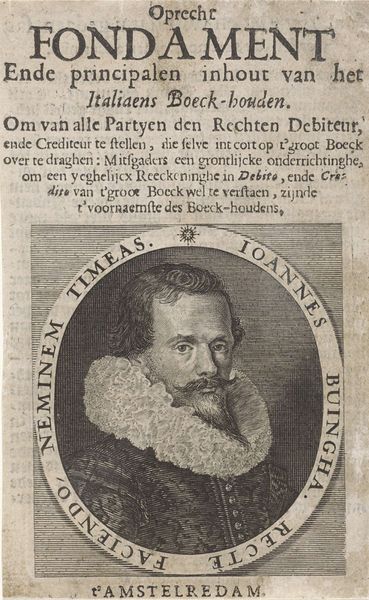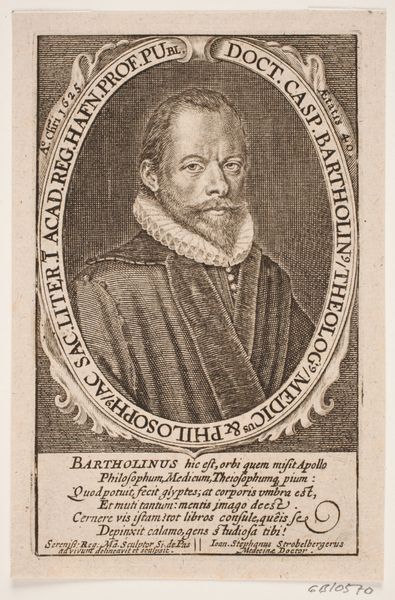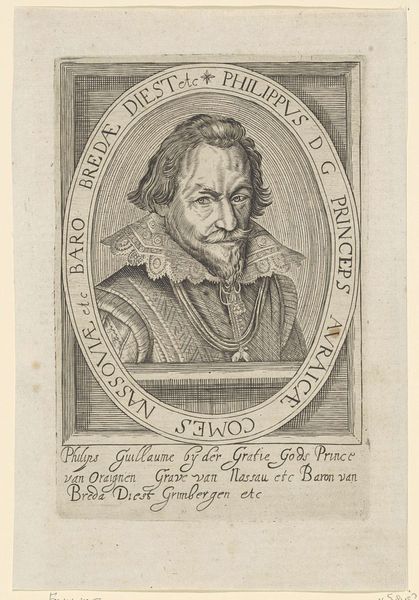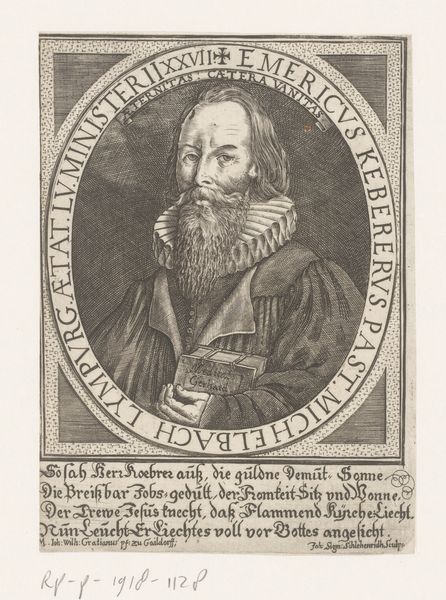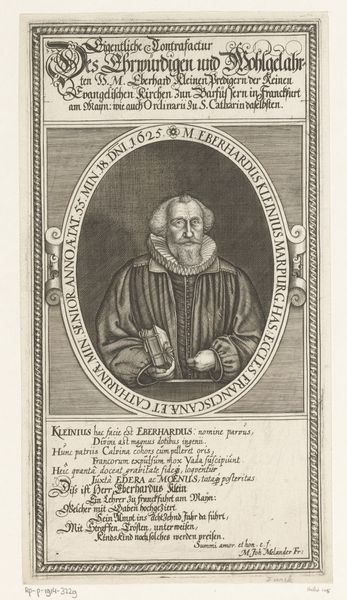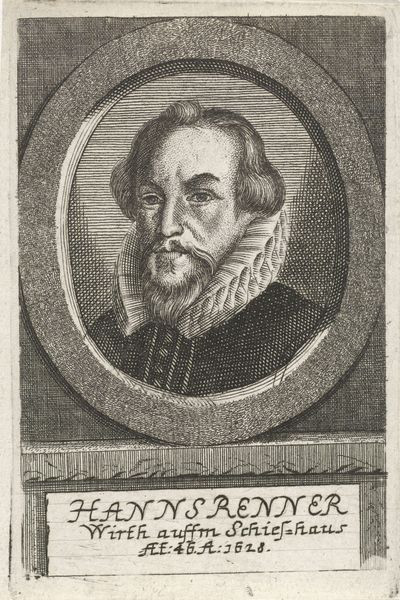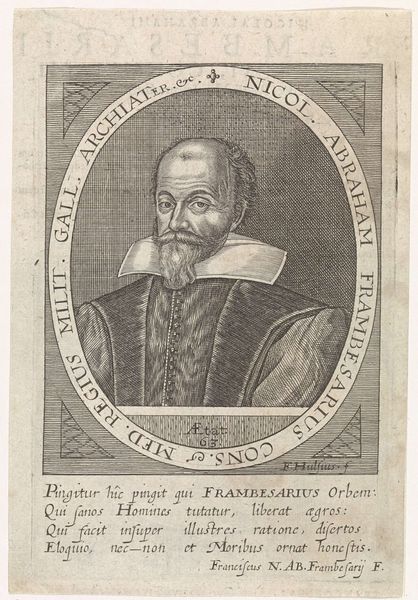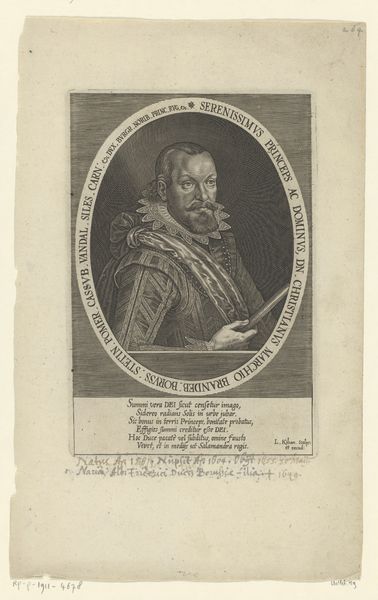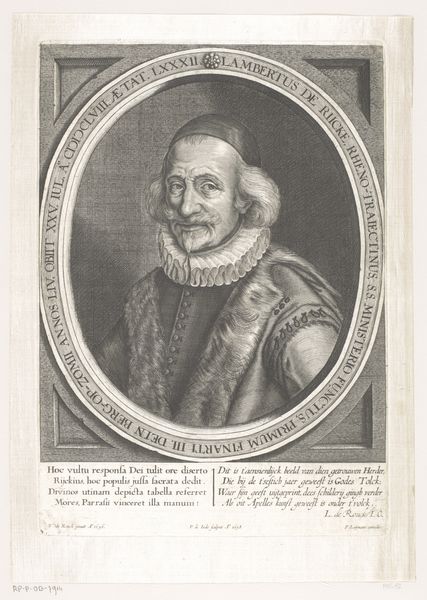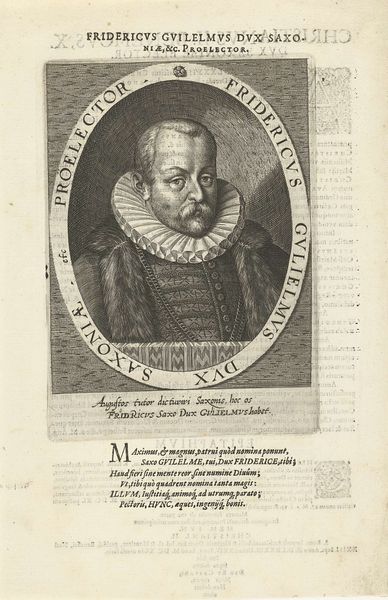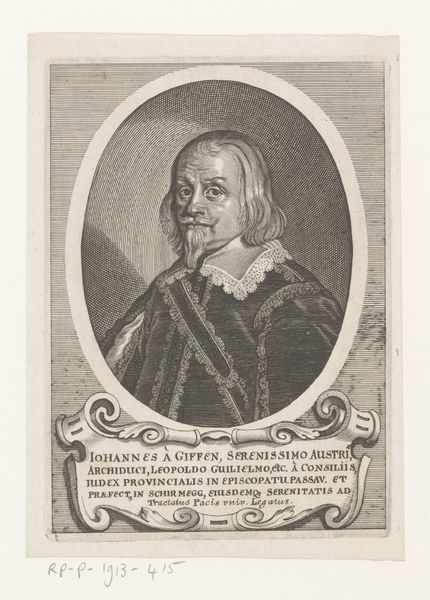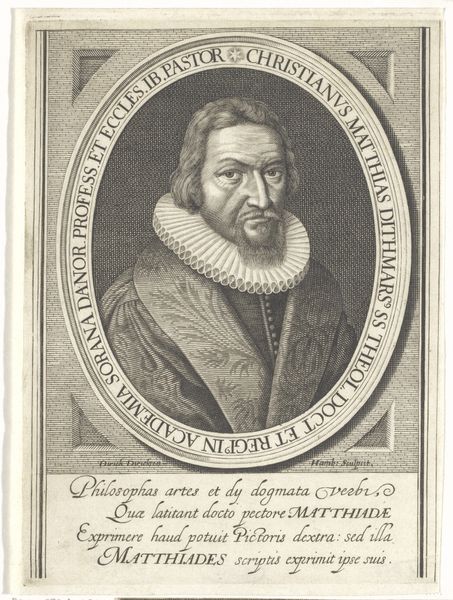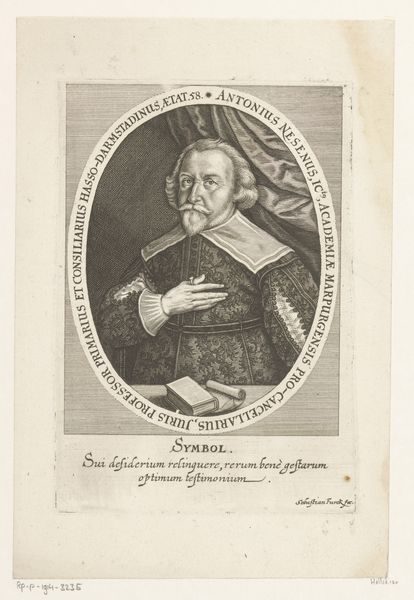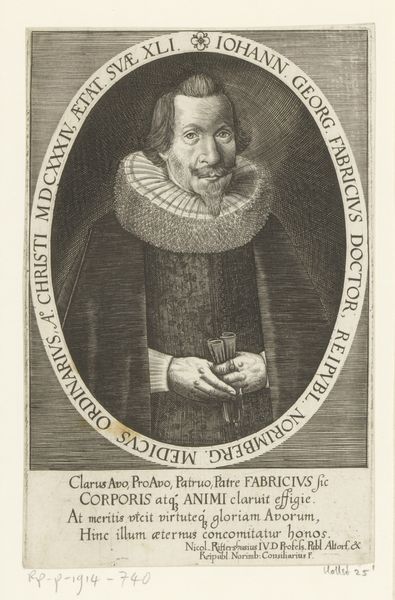
print, paper, engraving
#
portrait
#
aged paper
#
baroque
# print
#
old engraving style
#
hand drawn type
#
paper
#
script
#
stylized text
#
thick font
#
pen work
#
word imagery
#
engraving
#
historical font
#
columned text
Dimensions: height 81 mm, width 73 mm, height 142 mm, width 81 mm
Copyright: Rijks Museum: Open Domain
Salomon Savery made this print of Joannes Buingha, a mathematician and bookkeeper, in 1642. It’s an etching, a printmaking technique that relies on acid to bite into a metal plate, in this case likely copper. Notice the fine, closely-worked lines, especially in the face and ruff. The etcher would have achieved this level of detail using specialized tools to cut through a protective coating on the plate. The plate is then submerged in acid, which etches the exposed lines. The plate is then inked and printed, transferring the image onto paper. The very precision of the lines speaks to the economic world of 17th-century Amsterdam, a world that Buingha himself inhabited. Bookkeeping, a crucial skill for managing the complexities of global trade, is celebrated here. This portrait underscores how new forms of technical knowledge were gaining prominence, visualized through the graphic techniques of printmaking. It reminds us that even seemingly straightforward images are the product of intricate processes, linking artistic skill with broader economic and cultural shifts.
Comments
No comments
Be the first to comment and join the conversation on the ultimate creative platform.
